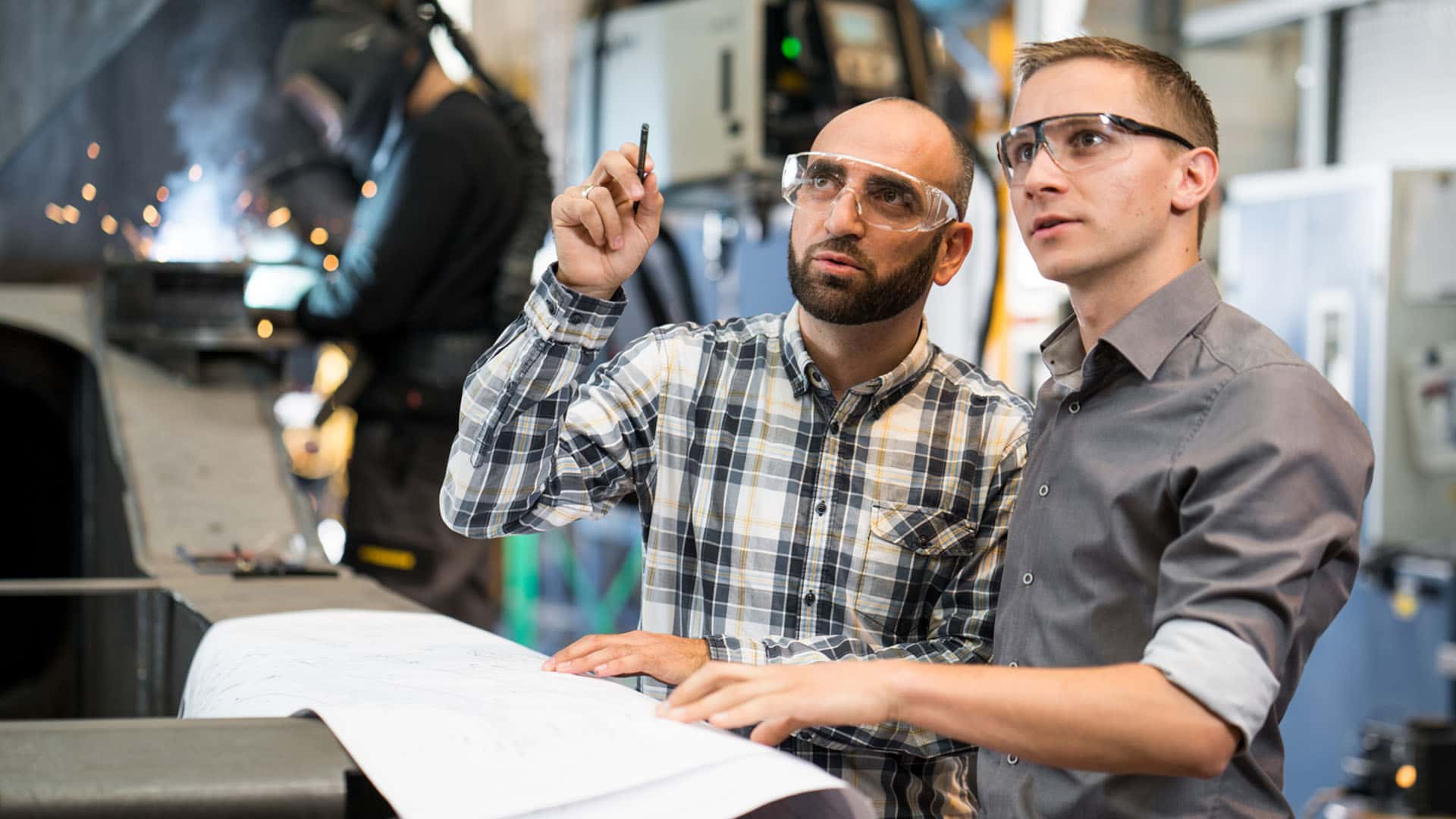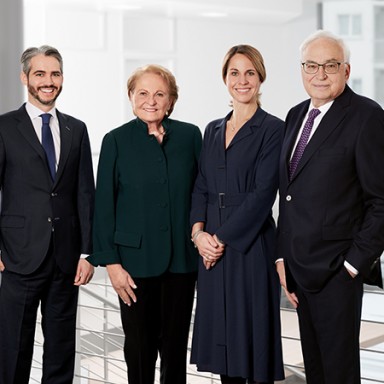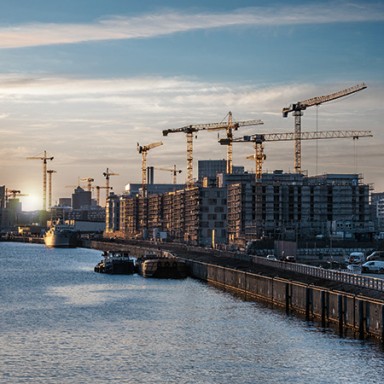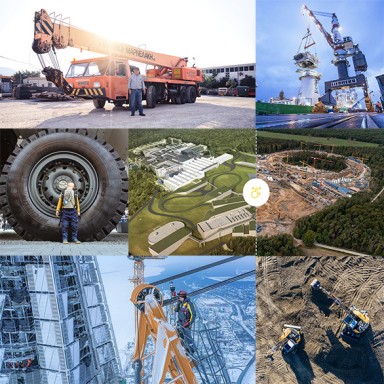Annual Report 2021

12 minutes reading time
An ode to the wind
The energy transition is progressing. The ever more perceptible advance of climate change and increasing supply bottlenecks provide a significant tailwind for the development of renewable energies. Climate-neutral and eco-friendly power generation through wind power is a special focus area in this regard. Liebherr product segments provide diverse contributions to the success of this task that affects all humankind.
Time to turn
An old Chinese proverb says, “When the winds of change blow, some people build walls and others build windmills”. In an era of climate change and extensive transformations in the economy and society, this proverb can most definitely be taken literally. The EU Commission has placed climate protection at the top of its agenda with the objectives of reducing CO2 emissions by 50 or 55 percent by the year 2030 and to become climate-neutral by 2050.
The ”Green Deal” means massive investment in research and development of renewable energies, and in extending the grid. This is not just a major task for humankind, however, it is also a challenge for the manufacturing industry, which must provide the technologies and machines required to reach these objectives. In this regard, Liebherr is superbly positioned worldwide and today the Group is already implementing comprehensive solutions for the wind power industry.
Harnessing the power of wind is not a new invention. For centuries, people have been using windmills that convert wind energy into rotary motion to drive millstones that grind grain or to pump water for irrigation systems. Modern wind turbines are similar in function to the old windmills: Gigantic, propeller-like rotors that are driven by the wind sit on top of their narrow tower. In appropriately exposed positions – on hills, in coastal areas, and on the high seas – rotor movement is transferred to a generator, which like a dynamo converts the energy into electrical power.
How wind is formed
Wind is created when air fronts with different air pressures meet. The greater the differences, the stronger the wind. Solar radiation causes the air to heat up, expand, become lighter and rise. This creates low pressure. At altitude, it is again colder than at ground level. The air therefore cools and sinks back down. High pressure forms. The colder air flows to where the warmer air rises. A kind of cycle is created and it winds.
There is (almost) always a wind blowing
The formula is simple: The stronger the wind blows, the more electrical power can be generated. However, this also means that: For this type of energy, without a suitable accumulator, if there is no wind, the lights literally will go out. The answer is a mix of renewable energies: In addition to wind, the primary sources are solar energy, biogas and hydro-power. Energy shortfalls from an at times highly fluctuating injection of wind power and solar power can by compensated by means of sector coupling in the heating, mobility and energy fields and/or energy can be stored via energy accumulators. In other words: For plant developers, operators, executing companies and maintenance services, the energy transition is an extremely complex field with many challenges imposed on the quality of products and solutions.
Sailing close to the wind
While some models currently installed on land generate up to more than five megawatts of electricity, the latest generation of offshore turbines have an output of eleven megawatts. In addition, offshore wind turbines are considered to be particularly efficient, as there is significantly more wind and it blows very evenly. Thus, an offshore wind farm with 80 turbines can cover the electricity consumption of 400,000 households with clean energy from the sea.
Wind turbines impact landscapes and cultural areas. Acceptance on the part of the local populace is also increased if they are offered an opportunity to participate financially in the project. The “Citizens’ Wind Park” model offsets possible impairments in the quality of life with an attractive financial investment for the citizens involved and their municipality. More and more, this type of civic investment in the future is setting precedents.
A strong partner in the energy transition
Liebherr is a strong partner for wind farms both onshore and offshore, offering the right solution for a wide range of requirements - worldwide. These include the design and development of components as well as earthmoving equipment for site preparation work, precast concrete parts for the towers, mobile and crawler cranes, and heavy-duty offshore cranes for assembly.
Last but not least, large roller bearings for rotor blade adjustment and azimuth adjustment are manufactured on high-precision Liebherr gear cutting machines. In other words: Virtually the entire wind energy world benefits from Liebherr solutions. The wind energy sector is a showcase for the performance and innovation of the family company.
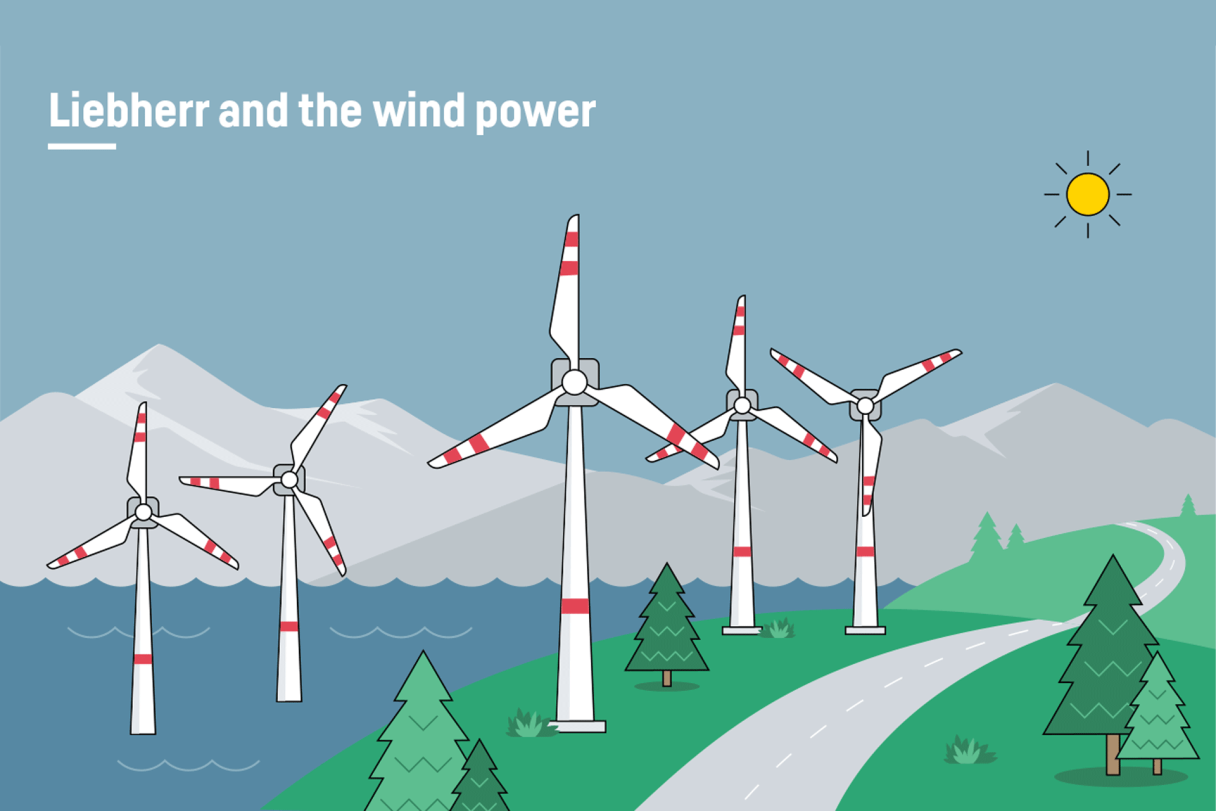
Preparations for a solid fundament
Earthmoving equipment from Liebherr does the groundwork for the erection (and future eco-friendly dismantling) of onshore wind turbines. Liebherr-EMtec GmbH offers a broad range of earthmoving equipment and materials handling machines, which are also used along the entire building process chain for wind turbines.
This already starts with the loading of components by Liebherr handling machines, for example in ports. During the construction of the plants themselves, the core competencies of Liebherr earthmoving machines come into play: crawler excavators are used to develop the terrain and excavation work is carried out to prepare the construction sites for building the foundations, for example. This excavated material is removed by dump trucks or wheel loaders. Bulldozers are then used to level the area of the site and thus prepare it for the crane site.
The concrete mixing plants from Liebherr can be joined directly to the production facility for tower sections to ensure the desired highest material quality.
Concrete landmarks
Among other things, the towers of modern wind turbines are assembled on site from precast concrete elements. The production of these concrete tower segments in the precast plant therefore places the highest demands on the high-tech concrete. At Liebherr-Mischtechnik GmbH in Bad Schussenried, high-efficiency mixing systems have been specially developed for the particularly demanding concrete recipes that are used to produce tower sections.
For example, the rotational speeds of the mixers and agitators can be variably adjusted independently of each other during the mixing process, depending on the materials added and the recipe. The Litronic-MPS process control system in conjunction with the Litronic-FMS moisture measuring system developed by Liebherr ensure high quality of the concrete and proper consistency.
Liebherr has set up its own test centre for collaborating with the customer in the continuous further development of products made from quality concrete and subject to demanding requirements concerning shape and load capacity. New recipes can be tested in small-batch laboratory mixer tests in the test centre The recipes can then be transferred to the large mixing plants for production.
How does wind power work?
Wind power is currently the most important form of renewable energy source. Wind turbines convert the energy of the wind into electrical energy without emitting CO2, which can then be fed into the power grid. Wind turbines can be used in all climatic zones. They are installed either on land (onshore) or in the sea (offshore). When wind hits the rotor blades of a wind turbine, negative pressure is created, which sets the blades in motion. This causes the rotor to start running. The kinetic energy of the wind is converted into rotary motion, which in turn drives a generator that converts the mechanical energy into electrical energy.
Mechanical masterpieces
Wind turbines are not just getting higher and higher. The configuration of existing ball bearings and roller bearings with external gearing or internal gearing must also be adapted to ever more demanding load profiles. Component quality and reliability are the top priorities in this regard.
A single bearing fault can bring the entire wind turbine to a standstill. In such cases, repairs are always very time-intensive and very costly. In addition, access to these adjusting units is extremely difficult; usually the rotor star is installed at a height of over 100 meters. Therefore, the bearings responsible for movement must be extremely reliable, and are configured for a service life in excess of 20 years.
Liebherr-Component Technologies AG has been building key components for wind turbines since 1996. These include slewing bearings, slewing drives, hydraulic cylinders and integrated lubrication systems, as well as the entire spectrum of electromechanical and hydraulic rotor blade control and horizontal yaw control of the nacelle, also known as azimuth adjustment, in wind turbines.
At Liebherr, the main bearings for wind turbines are tested on a specially developed test rig, where rigidity ratios are realistically simulated.
An essential part of our collaboration with customers around the world is applications engineering for tuning the individual components. In the wind power industry, Liebherr works together with all well-known wind turbine manufacturers; at this point in time Liebherr has equipped more than 15,000 wind turbines with components. The product spectrum extends from components for 800 kW turbines to solutions for multi-megawatt turbines used in offshore wind parks.
In addition to the current single- and double-row four-point contact bearings, Liebherr now also offers three-row roller bearings for pitch systems as well as slewing bearings. Liebherr is the innovation leader in this area and is continuously expanding its expertise and production capacities in Europe, Mexico, Brazil and on the Asian market. A new plant for slewing bearings, hydraulic cylinders and drives is currently being built in China.
High-tech in mechanical engineering
Liebherr-Verzahntechnik GmbH in Kempten (Germany) supplies appropriately designed hobbing, shaping and profile and generating grinding machines for manufacturers of gears for the wind power industry. After soft machining in milling or shaping and the subsequent hardening process, the gears are still ground to a very high quality in hard-fine machining using either profile or generating grinding machines. Here Liebherr can offer gear hobbing and gear grinding from a single source, providing the highest accuracy. Due to the large and sometimes heavy components, feeding them to the respective processing machines is a challenge to which Liebherr has responded with an automation solution that is as elaborate as it is efficient.
Six facts about wind power
Lifting and moving
It takes ultra-high performance lifting technology to erect and dismantle wind turbines. At Liebherr, lifting technology is categorised in different load classes, and precisely matched to the needs of the wind power industry with new boom systems for particularly high load capacities.
The telescopic mobile cranes (LTM) offer particularly flexible and versatile implementation. They can be driven autonomously on public roads, resulting in lower transportation costs. They can be quickly set up on construction sites and require minimal space. Another advantage: With the telescopic boom retracted and additional equipment, they can move on narrow paths from one turbine to the next. The basic unit of the lattice boom mobile crane (LG) can also be driven on public roads. This reduces the number of transport units compared to lattice boom crawler cranes.
To construct ever larger wind turbines (formerly 60-80 meters, now 160-165 meters high in Europe today, and there are even 180-meter towers) crawler cranes with a load capacity between 500 and 1,000 tonnes have also proven their worth. They are capable of lifting the heaviest loads (ever larger rotor blades and larger nacelles) to increasing heights. As a rule, the large equipment is also supported by smaller auxiliary cranes, for example, the 4-6 axle equipment telescopic mobile and crawler cranes or all-terrain cranes, especially during setup.
Larger turbines require larger cranes and new technologies. Here, Liebherr is working with customers to develop high-performance technologies for the erection of wind turbines of the future.
Naturally, wind is nice to have in wind parks. But not when setting up. In this case, wind often delays lifts and deployments. Liebherr set a milestone for greater safety and longer deployment times for crane tasks in windy conditions with its development of special “WindSpeed Load Charts”. With these load charts, Liebherr engineers in Biberach (Germany), Ehingen (Germany) and Nenzing (Austria) have made a number of new mobile and crawler cranes more stable for deployment in stormy weather.
Liebherr-MCCtec Rostock GmbH specialises in “heavy-lift offshore” and supplies cranes that can be used for installation of turbines and wind turbine foundations on the high seas. The product segment supplies both ends of the energy transition: On one hand, it supports erection of offshore wind parks. On the other hand, through decommissioning, it dismantles “old” forms of energy, which to this point had been extracted on the high seas.
The challenge and the potential for efficient solutions in this maritime field lies in smart, project-specific adaptation of the crane (together with the ship) to the respective application. In this regard, Liebherr cranes are compact by design; they take up little space, on platforms, for example. Yet they have wide booms and high maximum lifting capacities of several thousands of tonnes. In addition, the HLC series has a foldable A-frame for passing under bridges. Thus the cranes can be used quickly, efficiently and flexibly for wind energy.
Offshore heavy-duty cranes have load capacities of up to 5,000 tonnes.
Liebherr cranes are manufactured in Europe to the highest quality standards. As part of the commissioning procedure, the equipment is subsequently supported 24/7 by experts from Liebherr's tight-knit global service network. Here, the key factor is rapid availability of more than 50,000 spare parts. In addition, LiMain (Liebherr Intelligent Maintenance) is provided for cranes on platforms. Liebherr developed this system for remote maintenance of cranes. Ideally, a platform only requires one on-site visit a year. This offers immense savings where resources are concerned and it allows platform operators to work anytime and anywhere.
These are good prospects. Particularly now, at a time when the energy transition has a lot of tailwind. Experts estimate that the installed capacity in the offshore wind segment will increase sixfold by 2030. To this end, additional installation ships that can supply the new generation of 15 megawatt turbines will be urgently needed. This course was set long ago in Rostock.


